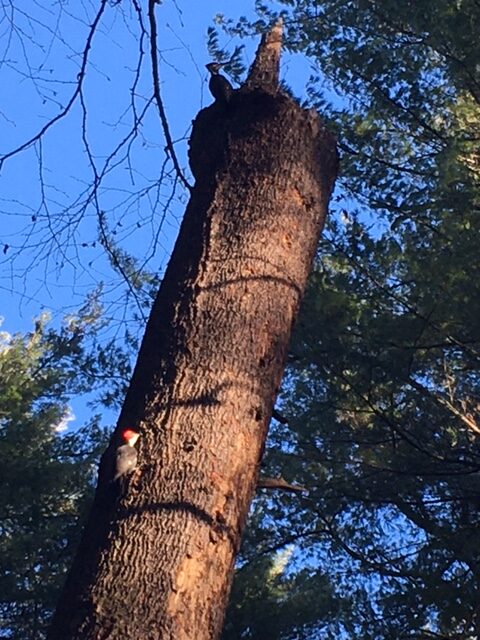Returning to my phenology spot for the final time, I it had noticeably changed from the last time I was there. That stubborn Norway Maple had finally started to accept the seasons were changing, and only had 50% of the leaves it once did. A few Yellow Birches had blown over in a windstorm, snapping about halfway up and leaving the fallen limbs to litter the ground. Looking at the ground, the fallen leaves had not yet started to decay into humus, especially in the dryer areas. Ferns still persist, however something interesting has happened to them. They all are matted down, no longer standing up, but rather lay flat on the forest floor as if they’d all been trampled on. One theory for this is that a rainstorm had compressed all of the ferns to the floor. Another theory is that something happened that resulted in a loss of water in the cells of the ferns, causing a reduction of turgor pressure in the cells. Besides the ferns, the only other small plants existed on a hill above the swamp, a clump of knee to waste high deciduous shrubs still holding onto green leaves. there was animal activity in and around my site. While there, I saw two Pileated Woodpeckers, hammering away at a dead tree. There were very cool. I took lots of pictures, here is one:

Reflecting back on my time spent here, it’s hard to pick one favorite thing. I love the lush greenness and the way light streams through the trees in the morning or evening. I love the openness of the area, how it allows you to peer into far corners of the woods. I love staring up at the towering White Pines in the area, watching their tops sway in the breeze. Yet, I think all of these elements combine to give the area one significant characteristic. They serve to animate it; to make it move, to make it breathe. Between the lush greenery, the swaying trees, and the beams of sunlight, it is a place that feels very much like life.